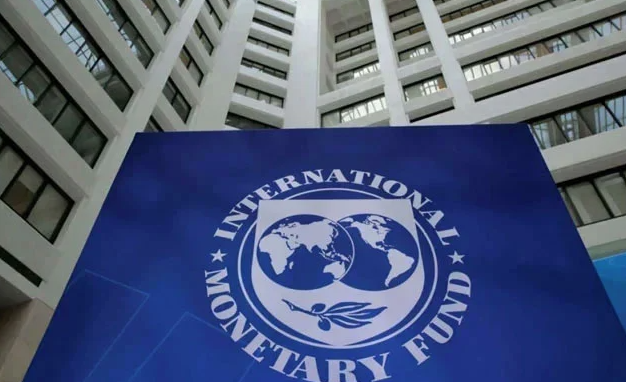- AFP
- Feb 16, 2025

IMF prohibits govt-led currency manipulation
-
- Web Desk
- Jul 19, 2023

ISLAMABAD: The International Monetary Fund (IMF) has slapped a stringent condition on Pakistan to stop its intervention in the exchange rate market and also said that the risks to the new $3 billion programme implementation were “exceptionally high”.
The global lender on Tuesday released its staff report on the $3 billion Stand-by Arrangement (SBA) that also appeared in a charge sheet against the government over its poor handling of the economy during the past year.
The report revealed how the government distorted the exchange rate market and the central bank lacked clarity when the pressures were increasing.
Pakistan accepted 10 major conditions in addition to accepting 13 other performance and indicative targets in return for the $3 billion package for July 12 to April 2024 period, the report showed.
The IMF said that the length of the SBA is also tailored to leave space for the new government to embark on a fresh programme, if it so wishes, enhancing ownership.
The government also committed that it would notify an increase in electricity prices before the end of July with effect from July 1 and that it would no longer grant any tax amnesty or tax concessions.
According to a major condition, the average premium between the interbank and open market exchange rates would not be more than 1.25% during any consecutive five business days.
At today’s value, the difference comes to around Rs4 per dollar.
The IMF said that reliance on administrative measures to manage imports since May 2022 and the tightly controlled exchange rate since September 2022 had caused a significant damage to growth and exacerbated external pressures by dissuading inflows, especially remittances.
“These interventions have undermined public trust in the exchange rate system and, going forward, it will be necessary to ensure that the exchange rate will be market-determined, allowed to act as a shock absorber, and free from formal or informal guidance or restrictions,” it added.
The IMF said that without the ability to formally intervene in the forex market, informal efforts began in the fall, including moral suasion on banks, to nudge the exchange rate to appreciate.
It added that when this did not succeed – import-payment restrictions and a crawl-like behaviour from October 2022 through end-January 2023, which fuelled pressures in the interbank market – exacerbated the scarcity of dollars, allowed the forex black market to grow and caused disruptions in the timely import of key inputs for domestic production and exports.
The IMF “staff emphasised that a functioning and flexible exchange rate market should be the means to address BOP pressures, rather than administrative and exchange measures”.
In the Letter of Intent to the IMF managing director, the finance minister and the SBP governor committed that they “will refrain from formal and informal guidance on the exchange rates of FX intermediaries”.
The report revealed that “downside risks to the baseline and programme implementation are exceptionally high”.
Amplified by the tense political environment, policy slippages could undermine programme implementation, in turn, jeopardising macro-financial and external stability and already stretched debt sustainability, it added.
Moreover, the IMF said, “External financing risks are exceptionally high and delays in the disbursement of planned external financing from international financial institutions and bilateral creditors pose major risks to a very fragile external balance given the extremely limited buffers.”
The IMF assessed Pakistan’s external financing requirements at $28.3 billion for the current fiscal year.
The IMF said, “Pakistan’s capacity to repay the Fund is subject to significant risks and would critically depend on policy implementation and timely external financing.
“The IMF underlined that “social discontent (in Pakistan) has risen over the deteriorating economic conditions and eroded living standards, and political tensions escalated significantly in May, with political and institutional fissures coming to the fore.”
It added that the financial pressures ahead had become formidable.
“Gross financing needs are very large, mostly due to large debt service payments, while external market financing has dried up.
“Confidence is weak, and credit rating agencies have downgraded Pakistan to just above default rating. Multilateral and official bilateral support has been critical to enable Pakistan to meet its debt obligations,” according to the IMF.
The IMF said that risks to debt sustainability “have become more acute, given the scarcity of external financing and the large gross financing needs that persist over the coming years, further narrowing the path to sustainability”.
“Any further downward revisions to the baseline could push debt towards unsustainability,” it added.
The IMF said that Pakistan’s economic challenges were complex and multifaceted, and risks were exceptionally high.
Addressing them required steadfast implementation of agreed policies, as well as continued financial support from external partners.
Consistent and decisive implementation of programme agreements will be essential to reduce risks and maintain macroeconomic stability.
It said that the economy took a tumble in FY23 amid worsening domestic and external conditions, stringent import payment restrictions, and the impact of the floods.
Provisional estimates for FY23 released by the Pakistan Bureau of Statistics (PBS) in May put real GDP growth at 0.3%, however data outturned in recent months disappointed and staff assessed that real GDP could decline by 0.5 per cent in the last fiscal year, it added.
But economic growth would likely pick up moderately in this fiscal year, reaching about 2.5%.
The IMF also found flaws in the working of the central bank. It said that despite the mounting pressures, actions by the SBP lacked clarity, as it kept its policy rate unchanged in Monetary Policy Committee meetings in August, October, and early June, expecting that the price rises had peaked and would subside.
The IMF said, “Revenue efforts to broaden the tax base fell short of expectations during the last four years programme period, and the tax-to-GDP ratio has declined.”
The report disclosed that the government imposed Rs254 billion in additional taxes.
The report revealed that the government would earn Rs79 billion extra by increasing the petroleum levy rate to Rs60 per litre with a path to reach an average rate of PRs 55 per litre over FY24.
The increase of personal income tax on salaried and business individuals will earn an additional Rs30 billion.
The 5% tax on DAP fertiliser would bring an additional Rs34 billion, an increase of FED on sugary drinks would bring additional revenue of Rs8 billion and increases of the advance tax on the purchase and sale of immovable property would yield an additional Rs46 billion.
The broadening of the base of the tax on second homes and other high-wealth items for non-filers; will fetch Rs19 billion.
The increase in the advance tax for builders and developers based on the land size of the project under development was estimated to generate Rs15 billion.
The increase of the additional GST on deliveries to businesses that were not registered for VAT would fetch Rs23 billion.
The government also committed that it would expand the income tax base by another 300,000 persons through the use of data and physical surveys to book new individuals.
They would also seek to bring the service sector, notably retailers, into the tax net by making better use of data (eg, from tax collected through electricity bills on commercial connections).
The IMF emphasised that the SBP would need to continue its tightening cycle to re-anchor expectations given that inflationary pressures were expected to persist over the coming year, including because the impact of exchange rate corrections would continue to reverberate through the economy.
“The SBP agreed to maintain a tight monetary policy stance—higher rates and prudent use of liquidity injections— as needed, given incoming data, to achieve real positive interest rates, on a forward-looking basis, and place inflation and inflation expectations on a clear downward path,” according to the IMF.





